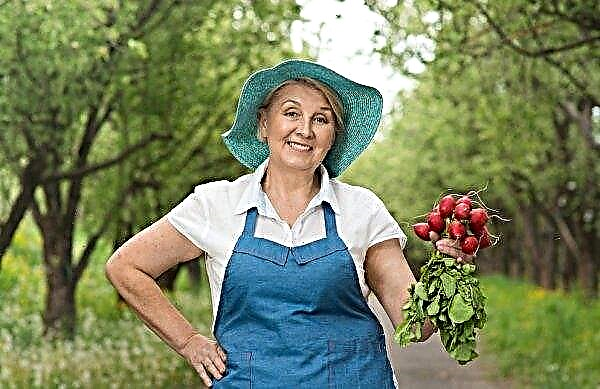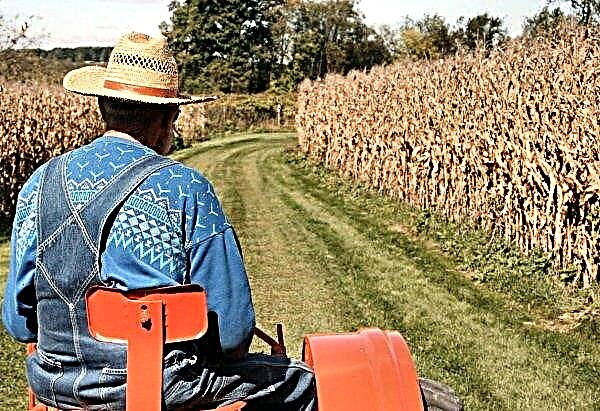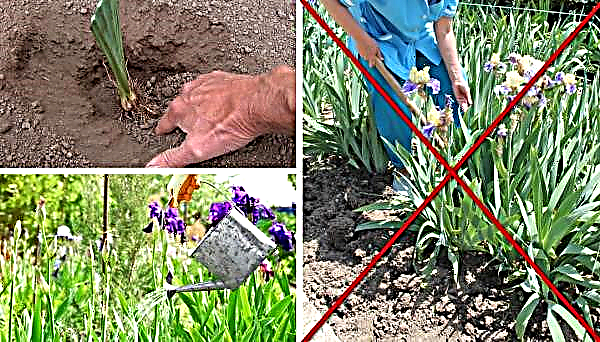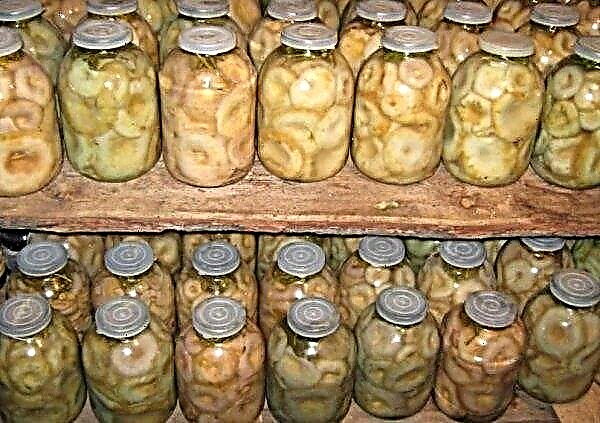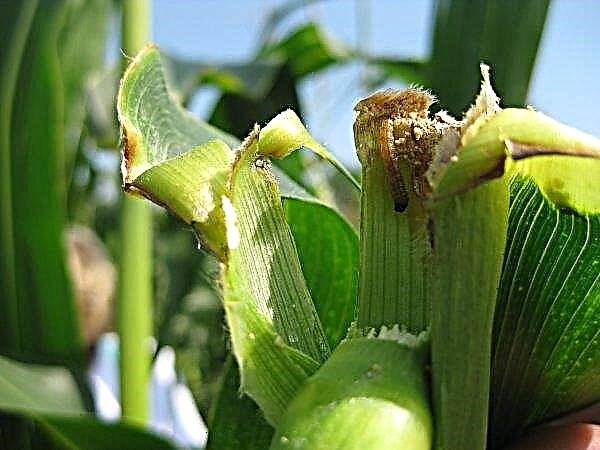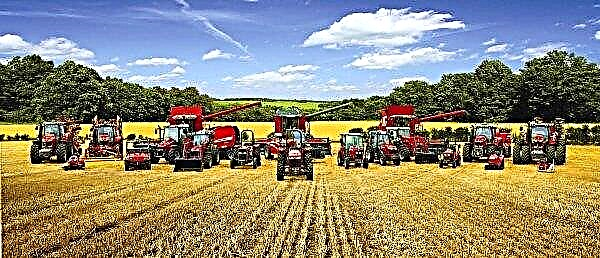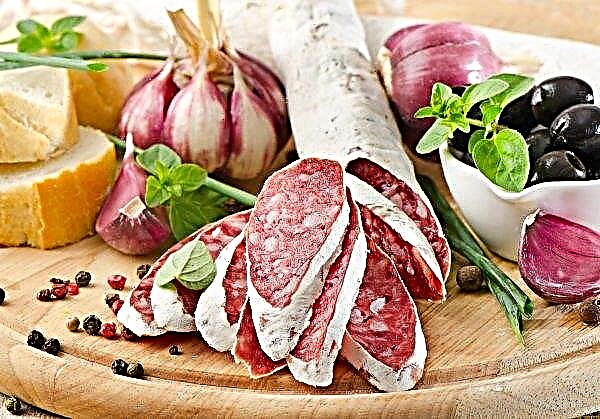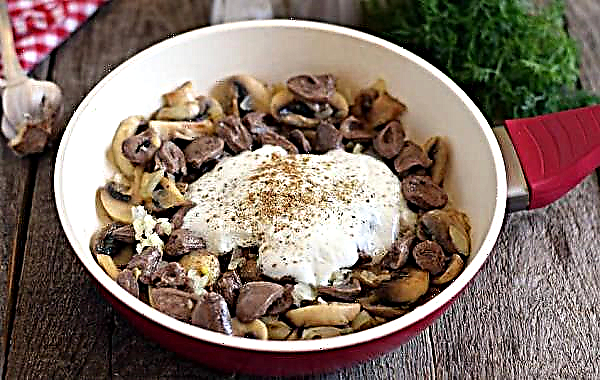Growing turkeys is a profitable business, and it is important to choose the right breed. Big – 6 is one of the crosses popular today that has features of maintenance and care. Read more about this below.
Origin
Big 6 were bred in the UK by Aviagen Turkeys and became the benchmark for meat production in Europe. Cross - the result of careful selection, has excellent characteristics of vitality. The company is known for other breeds, but it is this line that occupies a central place.
Description and characteristics of the cross – Big 6
Meat type representative. Its characteristic qualities explain the outstanding commercial results and popularity in modern poultry farming.
Appearance
Large birds with pronounced plumage.
External signs:| The size | Large |
| Head | Small |
| Beak, Earrings and Beard | Red skin folds and beak appendage |
| Chest | Convex and wide |
| Wings | Large |
| Tail | Large with feathery feathers |
| Paws | Strong, sinewy |
| Plumage and color | Fluffy feathers, white with a small black spot on the chest |
The “fluffiness” of the plumage is a sign of the breed, most pronounced in males.
The appendage on the beak of the turkey hangs down and, when the bird is excited, grows to a length of 12-15 cm.Important! The color of the skin growths of the bird should be bright red, this is one of the indicators of the health of the turkey.
Dimensions and Weight
The breed is appreciated for its size and quick weight gain. An adult turkey weighs up to 25 kg and a turkey weighs up to 11 kg.
Did you know? The turkey is the second largest in size among poultry (after the ostrich).
The monthly live weight gain table demonstrated by the breeder indicates the average daily gain of 152 g for a male and 98 g for a female.
Productive qualities
The meat type of breed indicates the main focus of selection, however, the birds show good results in egg production. To productive qualities include plumage. Fluff and feathers are light weight and excellent flexibility, which allows them to be used for stuffing clothes, pillows and blankets.
Egg production
The turkey begins to rush from 7 months. In 24 weeks, the laying hens produce up to 114 eggs of high palatability. A cream-colored egg with small specks has a mass of up to 80 g.
Meat yield at slaughter
One of the characteristic features of the breed is considered to be a growth halt by 100 days of life and after that (about 4 months) the bird is slaughtered. The meat yield is record-breaking - it amounts to 80%.
The weight of the chest is about 30% of the total mass of the carcass. Turkey meat has an excellent taste and low fat content, which is used in diet food.
Temperament
Birds have a lively disposition and, due to their powerful addition, they will not be offended. As for friendliness to other birds, breeders note the possibility of conflicts. Turkeys are recommended to be kept by families, separately from other birds.
Advantages and disadvantages
Summing up the features of the Big – 6 breed, let us highlight a number of pluses and minuses of the cross.
- The advantages include:
- record mass of turkey;
- fast gain of young growth;
- a high percentage of dietary meat;
- high quality feathers;
- greater egg production compared to other species.
- Breeders indicate the following disadvantages of the breed:
- incivility with other birds;
- poor tolerance of low temperatures and dampness.
Rules for choosing good individuals
To buy a thoroughbred turkey, it is better to contact a proven farm.
When viewed, pay attention to the following points:
- the age of an adult bird can be determined by the legs: the more corns and growths on them, the older it is. The best purchase age per tribe for turkeys is 2–4 years, for turkeys - 3 years;
- outwardly, the nestlings hardly stand out; only a small growth on the turkey’s beak is considered a distinctive feature.
- the bird should have bright red growths without deformities of the beak;
- feet should be straight with straight toes.
 If youngsters of different breeds are offered to choose from, and the seller does not have a proven reputation, you should not name the desired breed in order to avoid substitution.
If youngsters of different breeds are offered to choose from, and the seller does not have a proven reputation, you should not name the desired breed in order to avoid substitution.Home breeding, maintenance and care
Breeding turkeys from hatching eggs is a profitable way to get a big-6 breed. A high survival rate of chicks with this breeding (up to 85%) pays for the initial investment.
Incubation Rules
Incubation of eggs is more advantageous than hatching by the female, as it is heavy and can crush the shell. The task during incubation is to obtain high-quality offspring.
It is necessary to exclude such eggs:
- with notches and cracks;
- excessively large or small;
- with a deformed, leathery or soft shell;
- dirty, with egg yolk or washed.
Eggs with blood on the shell, elongated, and also completely white, without spots, are considered risky. The eggs retain their incubation properties for 7 days after the demolition.
During incubation, it is necessary:
- periodically turn the eggs;
- after 7 days, check the eggs with an ovoscope for rejection.
Chicks hatch from eggs after 26–28 days. Obtaining hatchery quality eggs for breeding in a private household is not easy. Big-6 cross-country turkey can rarely fertilize a turkey on its own because of its weight and size.
Obtaining hatchery quality eggs for breeding in a private household is not easy. Big-6 cross-country turkey can rarely fertilize a turkey on its own because of its weight and size.
Large farms use artificial insemination, and private breeders often breed pedigree birds with smaller species and obtain hybrids with changing characteristics.
Did you know? Turkeys fly well, so they often have wings trimmed on the farm.
Growing Features
The breed is unpretentious in content. Providing the right turkey poultry, good care and balanced feeding, you can fully realize the potential of the breed.
Content Requirements
The room for turkeys is calculated based on the norm of 1-2 adults per 1 square meter. The optimal composition of a turkey family is 1 male and 6 females.
The temperature for adult birds is maintained at +16 ... + 20 ° С, and for chicks in the first week of life - +30 ° С.
The house should be dry and light. In winter, artificial lighting is added.
Important! Meat and bone meal is necessary for birds to strengthen bones. Improper storage of the mixture causes a rapid multiplication of bacteria in it, and such a feed becomes dangerous.
Nests are installed one at a time on 4–5 laying hens.
Home Improvement
The poultry house is equipped with durable material, the floor is poured with concrete mortar. The walls need to be insulated, and in the cold season provide additional heating.
Perches are placed at a height of a meter from the floor, for one bird provide 40 cm in length. Litter on the floor should be constantly dry, use hay, straw or sawdust. Lattices are placed on the windows.
Walking organization
In the warm season, birds spend most of the day on a walk. The enclosure for walks must be fenced with a high mesh on all sides, including the top, to exclude a flight.
On the territory there should be a shaded area and a drinking bowl, constantly filled with water. To clean the plumage of parasites put a box with sand and ash (in equal parts), in which birds can bathe.
Feeding
Turkeys are fed three times a day. Wet mixes of cereals are provided for breakfast and lunch, while dinner consists of dry food. It is better to use crushed grain.
In general, grain should make up at least 65% of the total feed, and meal and meal should be 1-2%. The summer diet includes fresh grass, in winter they add good hay.
The diet for feeding birds cannot include:
- sweet and highly salty foods;
- moldy and sour foods;
- rye bread (crackers from white bread can be given in autumn and spring);
- proteins of animal origin (except bone and fish meal).
 Adult birds can be fed zucchini and pumpkin (a small amount), but they can’t be given to chicks.
Adult birds can be fed zucchini and pumpkin (a small amount), but they can’t be given to chicks.Adult turkeys
The daily intake of feed by an adult turkey is 665 g, a turkey needs 425 g.
The composition of the feed includes:
- 1/3 of wheat, 1/5 of soy and corn;
- 0.15% vitamin premix with minerals;
- ground shell or shell rock;
- 1/10 fishmeal.
Replacing wheat with barley can provoke obesity.
Turkey
The first three days the chicks get porridge and boiled crushed eggs every 3 hours. Then they add grass, yogurt and cottage cheese. The green part of the feed may include dandelion, alfalfa, plantain, and a small amount of green onion.
After 7 days, vitamin D is added to the feed, which is reintroduced after 50 days. Antibiotics are also given in the second week of life.
Important! Do not use a metal feeder for chicks! A soft beak can be damaged even with a weak blow.
At 2 months, turkey poults should eat on their own from the feeders 4 times a day. All food should be eaten in 15–20 minutes, after which the feeders are cleaned and washed. Thus, the residues will not deteriorate, and the possibility of poisoning will be excluded.
All food should be eaten in 15–20 minutes, after which the feeders are cleaned and washed. Thus, the residues will not deteriorate, and the possibility of poisoning will be excluded.
Disease Prevention and Treatment
Cross Big-6 is susceptible to common bird diseases:
- Newcastle disease. It is caused by a virus, more often affects chicks and is manifested by paralysis, mucus secretion from goiter, loose stools. Without vaccination, the outcome is fatal.
- Aspergillotoxicosis. It is expressed by diarrhea, immobility, loss of appetite. Appears with improper nutrition and dirty litter. It is necessary to add dairy products to the diet and immediately change the litter.
- Mycoplasmosis It is caused by bacteria and is characterized by a hoarse cough and swollen eyes, slow growth. Treated with special drugs.
- Histomoniasis. It affects the liver and the cecum of the chicks due to poor disinfection of the house. The main symptom is yellow-green discharge and frothy diarrhea. Deworming and veterinary drugs are required.
- Tuberculosis. Extremely dangerous and affects not only the respiratory tract, but also almost all the organs of the bird. Characteristic is a general decrease in health and the appearance of nodular formations, diarrhea. Contamination is often caused by dirty water, contaminated equipment, bedding or eggs. There is no treatment.
Sometimes baldness is observed in birds. It can be caused by a lack of vitamin B3, poor disinfection of the room, as well as parasites. To understand who eats feathers, you should look at the bird's head. Some types of parasites can infect the head and cause the feather to fall out.
To understand who eats feathers, you should look at the bird's head. Some types of parasites can infect the head and cause the feather to fall out.
Did you know? Bald areas become the target of fleas and ticks that cannot bite through the plumage of a healthy bird. Infected birds are treated with dust, and they also disinfect healthy individuals and the house.
Diseases of the legs can be signs of Newcastle disease, pullorosis, or arthritis. In the latter case, excess protein norms in the diet are likely. For treatment, add ampicillin for 3-5 days, then take a break for a week and continue taking the medicine until complete healing.
How to grow healthy birds?
Disease prevention measures are:
- maintaining the cleanliness of the litter and the premises of the house;
- timely vaccination and periodic deworming;
- proper nutrition and walking in the fresh air.
Dangerous viruses can be carried by rodents and stray wild birds, so their contact with domestic turkeys must be excluded.
Broiler Beginner Tips
To successfully start growing turkey broilers, you should follow these recommendations:
- the house where geese or chickens were kept should be thoroughly disinfected;
- litter on the floor is changed twice a week;
- the use of starter feeds will first ensure healthy growth for the chicks;
- to facilitate care, nipple drinkers are used that exclude stagnation of water;
- early obesity of birds must be avoided, so feed should not be oily.
Breeding broilers is not difficult. For beginners, you need to carefully study the basic requirements for the maintenance, feeding and prevention of diseases in order to avoid possible problems.
Big-6 cross-country turkeys are promising heavy birds. Their cultivation has economic benefits and allows you to get inexpensive meat of the highest quality, as well as delicious eggs and high-quality fluff.

